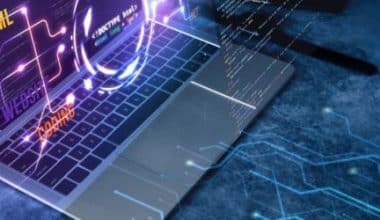You can’t afford to waste time, effort, or money looking for and replacing lost or stolen assets. Asset Manager allows you to keep track of your assets, where they are, how much they cost, and more. To check in and check out tools and equipment to employees, you can use existing barcodes or create your own. It only takes a few minutes to download and install Asset Manager. In this guide, we will list some good asset manager software that can help you, including the IT and digital asset manager software and then some free or open source software. Let’s get to it.
What is Asset Manager Software?
Businesses must manage and track more assets than ever before in the digital age. With the proliferation of mobile devices in the workplace, increasingly complex cloud technologies, licensed-based software, and more frequent updates managing and tracking IT assets have become significantly more difficult. Furthermore, frequent employee turnover raises data security concerns.
This is where asset management software (AMS) enters the picture. It enables businesses to monitor and effectively manage their assets to ensure maximum utilization while lowering IT and software costs. They provide a comprehensive view of an asset’s lifecycle, from acquisition and implementation to renewal and disposal. Though a company can track its assets with a simple spreadsheet, an AMS allows it to analyze data specific to each asset, allowing it to make more informed decisions about asset management.
How Does Asset Management Software Work?
Asset management software gathers and compiles data on all assets in order to track them throughout their entire lifecycle. As an asset progresses through its lifecycle, AMS monitors its location, who is using it, and its downtime and uptime. Automated reports provide critical data and an analysis of each asset to management.
Why Is Asset Management Software Important?
Businesses cannot know what they own and how much it costs them unless they track their assets. When properly implemented, AMS can reduce administrative costs associated with asset tracking, reduce human errors, and save the business time and resources that can be used for revenue-generating functions. It can also provide a framework for holding employees accountable for asset management and provide deep insights into business performance.
Best IT Asset Manager Software
IT asset management software is a type of IT manager software. It streamlines the management of all IT assets, from computers to SaaS applications. The primary function of IT asset management software is to provide IT teams with complete visibility into their technical infrastructures. As a result, they can track, forecast, plan, and manage costs, eliminate security risks, and ensure compliance. Let’s take a look at the best IT manager software available:
#1. Asset Panda
Asset Panda is a well-known asset management tool that can track virtually anything, including IT assets. This Asset Panda takes a versatile approach to asset management, allowing teams to tailor the platform to their specific requirements.
Asset Panda also allows for an unlimited number of users. Anyone who needs to track IT assets can do so in a single, centralized location.
#2. SysAid
SysAid is a service provider that provides everything from a robust IT service desk to comprehensive IT asset management. SysAid’s asset management tools are designed to fit seamlessly into any service desk, increasing efficiency and visibility.
The asset management tools provided by SysAid are extensive. IT teams, for example, can benefit from inventory management, which includes support for hardware and software assets. Another noteworthy feature is the ability to configure custom monitoring and receive real-time alerts.
#3. Freshservice
Freshservice is a full-service suite of IT asset management tools from Freshworks. Freshservice’s automated discovery capabilities are a standout feature. IT teams can quickly scan all IT assets in real-time using the tool’s Discovery Probe to update asset data. These asset discovery solutions support a wide range of assets, from hardware to virtual machines.
Freshservice also includes relationship mapping, full asset life cycle management, contract management, and software-as-a-service management built in.
#4. UpKeep
UpKeep differs from the other platforms on this list in that it combines capabilities from a computerized maintenance management system, enterprise asset management, and application performance management into a single solution. Teams can monitor asset maintenance, manage assets throughout their life cycles, and improve asset performance using UpKeep’s Asset Operations Management Platform.
#5. ManageEngine AssetExplorer
ManageEngine’s AssetExplorer is a web-based asset management solution. AssetExplorer enables teams to manage IT assets from deployment to retirement, including hardware and software. The built-in software license management tools are a key feature of AssetExplorer.
#6. GoCodes
GoCodes is a straightforward asset tracking solution. This GoCodes offers custom QR code tracking for everything from desktop computers to routers and everything in between. Mobile scanning apps enable teams to complete asset-specific tasks from anywhere.
GoCodes also includes powerful reporting and analytics tools, allowing teams to see detailed data about their assets in real time.
#7. Ivanti
Ivanti is a comprehensive IT asset management platform that provides solutions for discovering, managing, securing, and servicing all IT devices. This Ivanti Neurons for ITAM is a solution that allows IT teams to use a centralized database to track hardware and software, as well as on-premises and cloud-based devices. Real-time discovery, life cycle tracking, barcode scanning, and other features are also included in the solution.
Top Digital Asset Manager Software
Digital asset manager (DAM) software is a technology that can automate or simplify this process while also providing numerous benefits to your business. Digital asset manager software not only stores digital assets in a centralized location, but it also automates workflows and tasks such as image watermarking, provides advanced search capabilities for locating media files, and manages permissions and other security protocols.
Let’s take a closer look at some digital asset management software to keep an eye out for:
#1. ResourceSpace
ResourceSpace is an excellent choice for universities, nonprofits, and other businesses looking to implement a digital asset management system while keeping costs low. The free plan for this open source Digital asset manager software has no limit on the number of users, but there is a free storage limit of 100GB.
AI automated tagging, user permissions, search tools, version control tools, and an analytics function are just a few of the features available in ResourceSpace to help you upload, organize, and access files more easily.
#2. Pimcore
Pimcore is a free or open source Digital asset manager software used by over 100,000 companies worldwide, including Pepsi, Sony, and Audi. It allows companies to integrate, consolidate, organize, store, reuse, and manage any type or amount of digital assets. Its Community edition provides free access to unlimited data, integrations, and users.
#3. Pics.io
Pics.io is an excellent DAM system for people who already pay for Google Drive storage. This Pics.io allows you to add to your cloud storage an easy-to-use, centralized digital library for your assets. However, on Pics.io’s free plan, you are limited to a maximum of 50 thousand assets in the library, and adding user accounts is not free.
#4. Brandfolder
Brandfolder is a highly rated digital asset management platform used by enterprise companies such as Slack and Lyft.Brand Intelligence is one of its best features, as it uses a combination of proprietary AI and machine learning technologies to show who is using your assets, where they are being used, and which are the most effective.
#5. Adobe Experience Manager
Another enterprise solution for businesses that need to deliver content across multiple digital channels is Adobe Experience Manager (AEM). It combines the power of a digital asset management system and a content management system through automation, smart tools, electronic forms, developer tools, and cloud hosting.
AEM enables you to create and reuse digital assets known as “Experience fragments” across multiple channels and devices.
Top Free and Open Source Asset Manager Software
Although many businesses use asset management software to keep track of their assets, not all businesses can afford to do so. Fortunately, there are several free, open-source asset manager software options. Here are a few examples:
#1. Spiceworks
IT administrators and staff are familiar with the Spiceworks suite of IT tools and the community that supports them. Spiceworks IT Asset management software is a full-featured solution that integrates well with other Spiceworks tools and has some of the best community support in the industry.
Spiceworks was created with IT resources in mind, and it is designed to track your organization’s hardware, licenses, and cloud services. A feature-rich dashboard provides detailed real-time reports on all information stored in the system about your organization.
#2. Snipe-IT
Snipe-IT is a complete web-based warehouse and inventory management system. As a self-hosted cloud solution, it provides a feature-rich package that enables businesses to seamlessly integrate asset management into their existing workflows.
Snipe-IT’s services include advanced asset management, software license management, and barcode tagging for physical assets.
#3. OpenMAINT
OpenMAINT is a management solution that makes it simple to maintain buildings, equipment, and industrial plants. It is a comprehensive management system for physical assets that boasts of being infinitely customizable while allowing for gradual implementation to minimize organizational impact.
#4. CMDBuild
CMDBuild is an open-source asset tracking software solution that is capable of tracking all data related to IT, mobile assets, and service management. With a rich mobile platform to interface with its web services, it’s an ideal solution for keeping your organization on top of IT maintenance and management.
CMDBuild is the most highly customisable and flexible free and open-source asset manager software, based on knowledge and experience gained in the field.
#5. Asset Tiger
Asset Tiger is a cloud-based asset management tool that provides detailed auditing and tracking for logged-in equipment. The highly capable booking and check-in/check-out functionality that allows users to take ownership of assets is a significant advantage of Asset Tiger over other solutions.
The feature-rich Asset Tiger package includes a powerful mobile app for asset management on the go.
How Much Does Asset Manager Software Cost?
The cost of asset management software varies according to the features provided and the pricing method used. Some AMS providers charge by the number of users, while others charge by the number of assets, or a combination of the two. So it all depends on what you want from an AMS system.
How Does Asset Manager Software Help With Audits?
All organizations, public and private, must maintain accurate asset records. Asset management software streamlines the process of tracking assets and managing data for businesses. For improved business performance insights, AMS provides complete visibility into asset costs, usage, and return on investment. It can also track depreciation for tax purposes and determine an asset’s useful business life.
What does a Software Asset Manager do?
Its primary responsibilities include purchasing and disposing of software tools, ensuring that they function properly, adhering to organizational policies, software license compliance, and other software-related activities.
What is an Asset Management Software Called?
Enterprise asset management (EAM) is a set of software, systems, and services that are used to manage and control operational assets and equipment. The goal is to improve asset quality and utilization throughout their lifecycle, increase productive uptime, and lower operational costs.
Is IT ERP or Asset Management System?
EAM is limited in scope; it focuses on asset maintenance and lifecycle management.ERP is a much broader concept. It provides features normally provided by a variety of different software systems on a single platform. In terms of asset management and financial planning, ERP and EAM share some features.
How do you Become an Asset Manager?
A bachelor’s degree in finance, accounting, or a related field is required to become an asset manager. Because experience is essential for landing a job, you should intern at an investment bank or financial institution while still in school.
Why do I need an Asset Management Software?
Asset management software is intended to assist your company in reducing its expenditures on acquiring, maintaining, and operating assets. You want to run at peak performance, which means you must keep costs under control, production quality at an acceptable level or higher, and returns maximized.
Who are the Clients of Asset Managers?
Clients of asset management can range from regular people to nonprofit organizations and large and small public companies. Similarly, asset management companies can be large corporations or one-person operations.
What makes a Good Asset Manager?
Employers want someone who can conduct rent reviews and negotiate better deals that will add value to the assets. It is also necessary to be able to develop and implement strategies that will add value to assets under management while making the best use of the capital expenditure budget.
Conclusion
Because asset manager software systems can assist you in better storing, organizing, finding, distributing, analyzing, and managing your assets, using AMS software can save your company thousands of dollars and hours of manpower. Using any of the above-mentioned open source or paid asset management software can assist your company in reducing friction as it scales.
- ASSOCIATION MANAGEMENT SYSTEMS: Tops Options In 2023
- BEST INSURANCE AGENCY MANAGEMENT SYSTEMS IN 2023
- ASSET MANAGEMENT SYSTEM: Benefits & Top 5 Software Solutions
- ASSET SALE: Definition, Comparisons, & All You Need
- IT MANAGER: Meaning, Services, Salary & Resume
- ATTRITION: A Detailed Explanation of Attrition in Business






